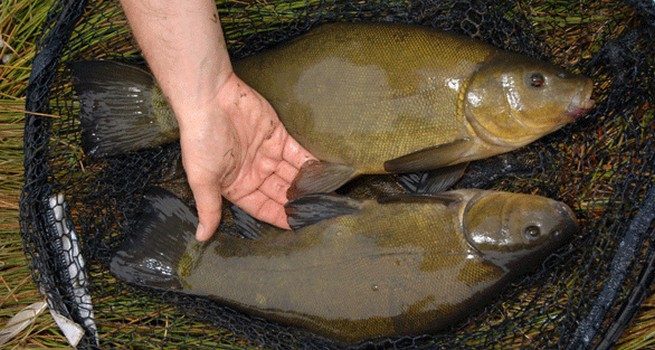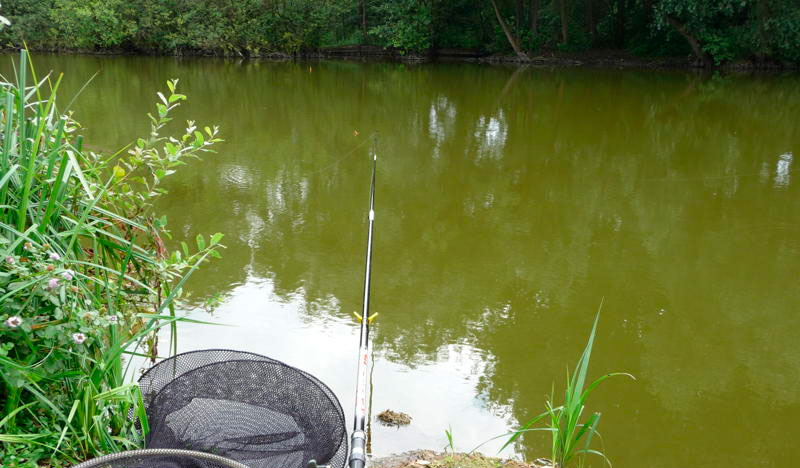
At the beginning of summer, the tench does not peck, but hides in the mud, after which, 2-3 days before spawning, it goes to spawn in the most grassy and reedy places. Starting from mid-July, tench biting resumes again. It is better to start catching tench on a float rod at 8-9 in the morning, when the water has already warmed up in the sun. It is best to catch this fish with bait, which can be pieces of large chopped worms and ordinary cottage cheese. It is advisable to choose places near reeds or reeds, along which tench prefers to walk in the morning. Usually fished from the shore, but you can also fish successfully from a boat. For this, the boat should be installed 5-6 meters from the grass, and the fishing rod should be thrown to the front line of reeds or grass. Tench fishing is especially successful in cloudy weather, when fine warm rain pours. Such successful fishing can even last all day until the evening.
A red dung worm can serve as a nozzle. However, it is best to take a bloodworm or a crayfish neck cleaned from a hard cover. It is better to choose a rod that is longer and as elastic as possible. The fishing line must be strong, with a strong leash, consisting of 3-4 selected and well-woven horsehair, or a vein 0,25 mm thick with hooks No. 6-8 without bends.
It is advisable to choose a float that is elongated, cork, with a goose feather stretched through it. Moreover, it must be installed in such a way that the nozzle barely touches the bottom.

The tench pecks very hesitantly. First, the float starts to wiggle slightly, then the wiggle will be stronger, with short breaks. After that, the float either goes to the side, or first lies down and only then quickly goes under the water. The bite continues for quite a long time, because before finally swallowing the nozzle, the tench will suck it for a while, wrinkle its lips and only then swallow it. And since all this is done with some interruptions, the float receives the movement described above, and it should be hooked exactly when the float goes to the side.
The strike must be strong, because the lips of the tench are thick. When fighting, the tench always stubbornly resists, and large specimens stand on their heads, so it is difficult to get them out of this position without risking breaking the line. Therefore, professional fishermen advise in such cases to stop playing and wait until the fish itself changes its position. This is immediately “signaled” by the float.
The biting tench in July is quite strongly influenced by weather changes. For example, with a decrease in atmospheric pressure, it may temporarily stop. After rain, the tench floats into the upper layers of the reservoir, this must be taken into account when lowering the nozzles. It is noted that the most successful catching of this fish on cancer neck. You can also take maggot, which is much easier to get than crayfish, or slugs with peeled snails.
វីដេអូ "ការចាប់ត្រី"
LINE CATCHING – TIPS FOR SUCCESSFUL FISHING









